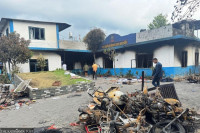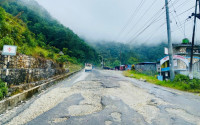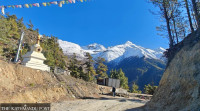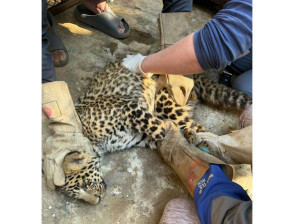Gandaki Province
Study shows faecal coliform in drinking water sources in Parbat
A month-long study conducted in all local units of the district shows the presence of the microbe, raising concerns of an outbreak of water-borne diseases, including cholera.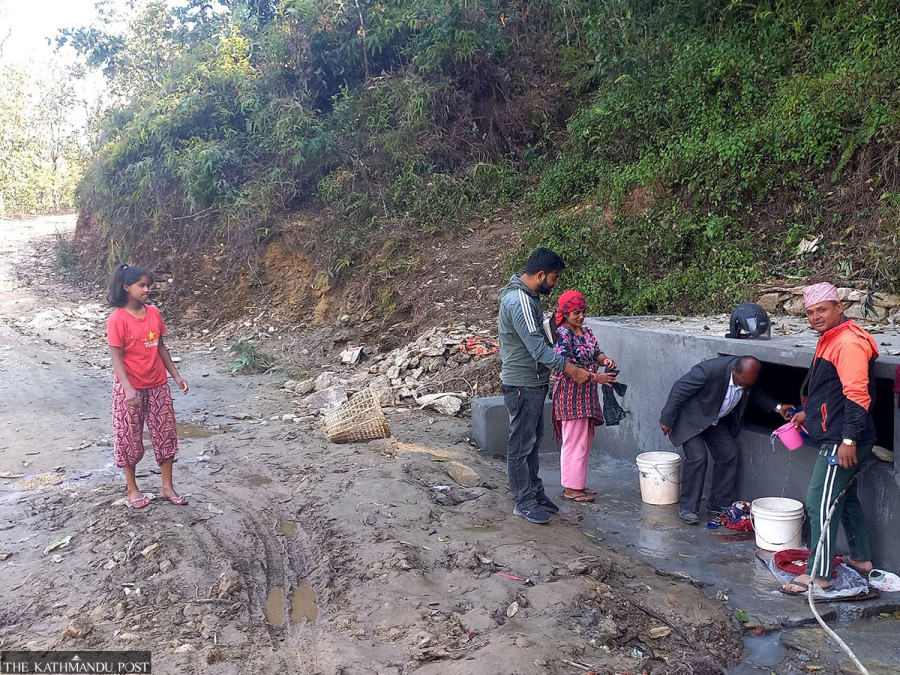
Agandhar Tiwari
Samples collected from various drinking water sources in Parbat have been found contaminated with faecal coliform, according to a study carried out by the District Health Office.
A team of experts from the District Health Office tested drinking water samples from various water sources from all seven local units of the district. The team collected and tested the samples for over a month. The report of the testing was made public a week ago.
The report showed the presence of faecal coliform in a majority of the drinking water sources in the district.
Following the study, public health officials have concluded that the majority of people in the district have been drinking contaminated water, raising concerns of an outbreak of water-borne diseases, including cholera.
The team, during the testing, found that nearly 80 percent of the 31 water sources in Kushma Municipality were contaminated with coliform.
According to the report, 78 percent of the 14 water sources in Phalebas Municipality, 66 percent of the 15 water sources in Modi Rural Municipality, 61 percent of the 13 water sources in Mahashila Rural Municipality, 57 percent of the 14 water sources in Paiyun Rural Municipality and 75 percent of the 12 water sources in Bihadi Rural Municipality were found to have been contaminated with coliform.
According to Santosh Poudel, acting chief at the health office, drinking water contaminated with coliform could lead to water-borne diseases, including diarrhoea, dysentery, typhoid, and hepatitis, among others.
“Drinking contaminated water has a direct impact on the health of the people,” said Poudel. “The presence of coliform in water sources is detected usually during the monsoon since contaminated flood waters get mixed with the water source.”
Poudel said that the water that flows at the surface level during the monsoon carries contaminants and gets mixed with drinking water sources, leading to a high presence of harmful microbes in water.
Health officials say that drinking water from such sources could lead to an epidemic-like situation.
“The spread of cholera in Kathmandu is also because of contamination at drinking water sources,” said Dr Manav Tiwari. “Drinking water with a high level of coliform without treating it first could lead to diarrhoeal diseases, which could make way to a cholera epidemic.”
The health office had carried out the tests following a steep rise in diarrhoeal patients in Khareha of Kushma Municipality and Mudikuwa of Phalebas Municipality. A month ago, the two municipalities reported around 30 patients suffering from diarrhoeal disease in a single day.
Public health stakeholders have suggested that the local units take concrete steps to provide safe drinking water to all residents of the district.
“Drinking water should be treated before it is distributed for consumption,” said Poudel. “A water-treating machine costs around Rs 5 million and it can treat contaminated water for around 2,000 families. The cost of the machine should not be a big issue for any local unit.”




 20.12°C Kathmandu
20.12°C Kathmandu.jpg)

